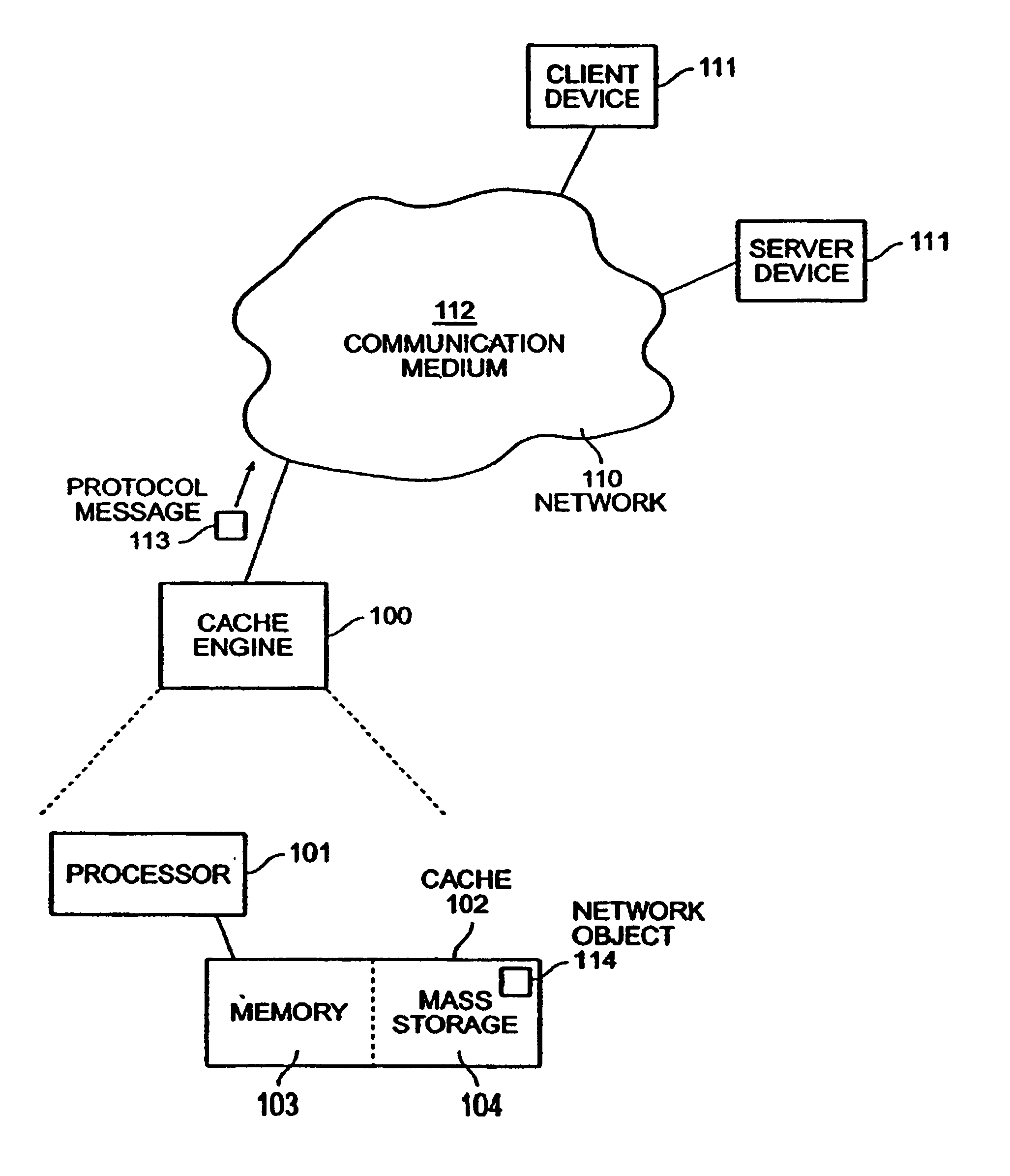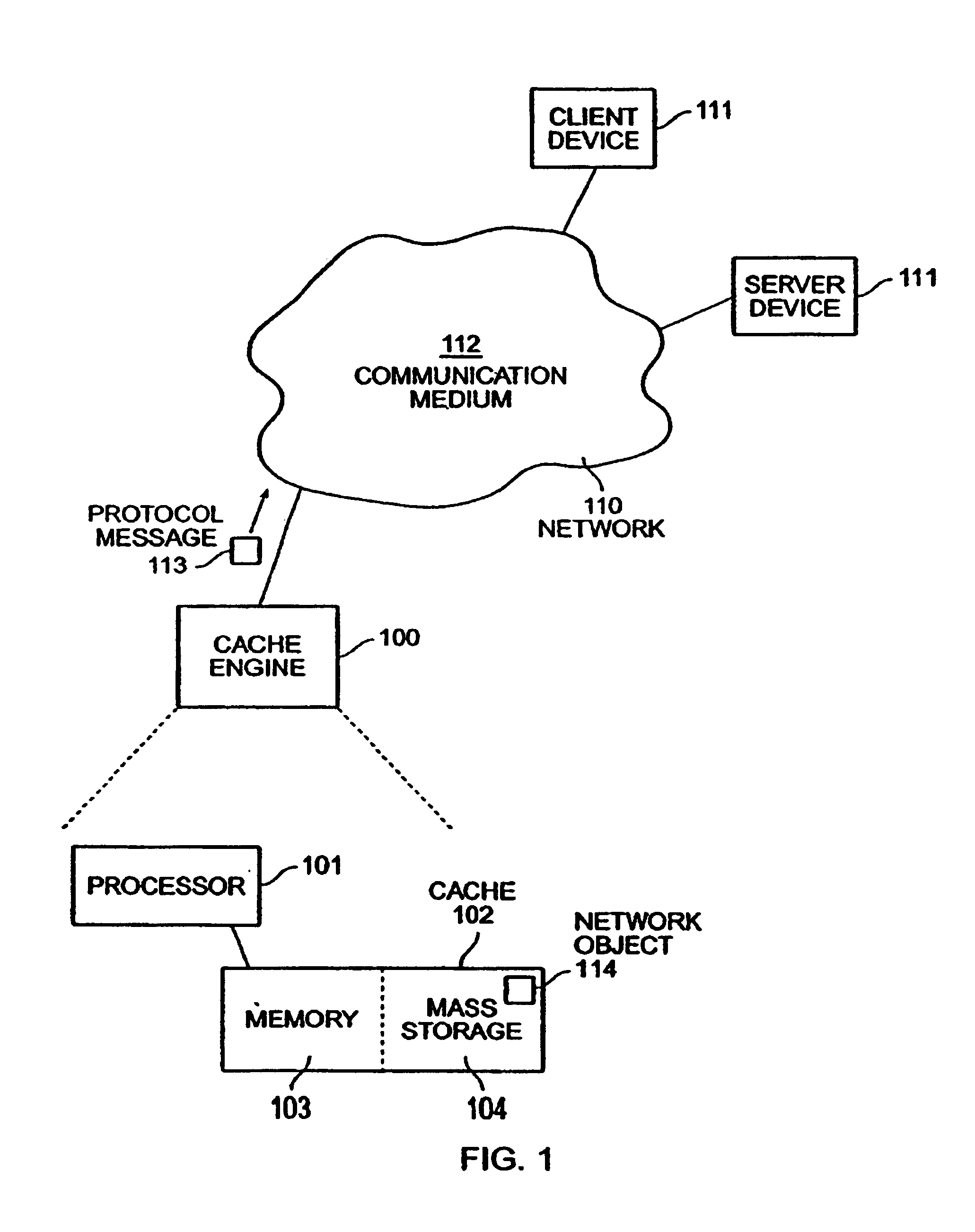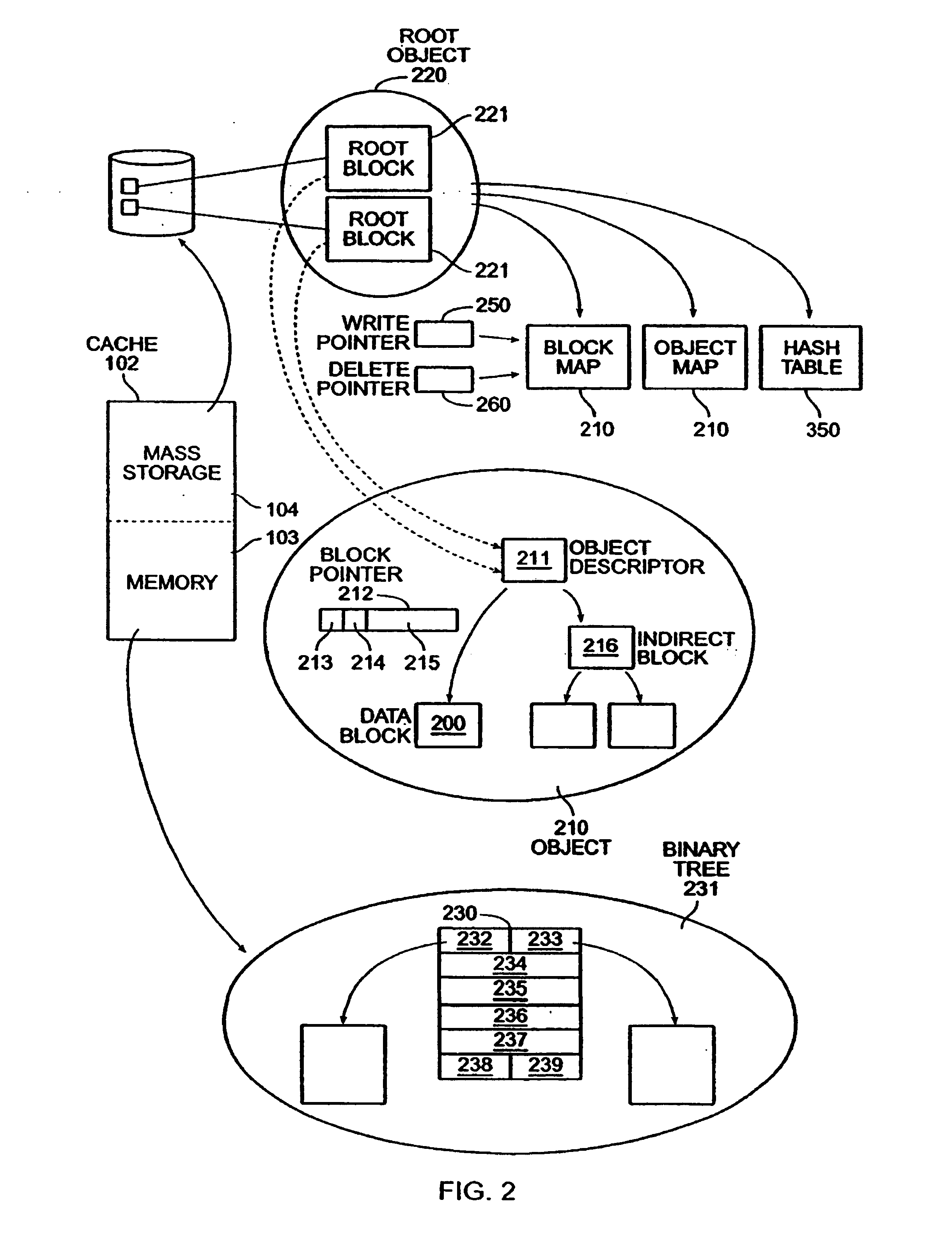Network object cache engine
a network object and cache engine technology, applied in the field of network object cache engines, can solve the problems of large overhead, slow communication path between the server and its clients, and the local operating system and the local file system or file server of the proxy, so as to reduce the amount of available cache, maximize efficiency, and maximize efficiency
- Summary
- Abstract
- Description
- Claims
- Application Information
AI Technical Summary
Benefits of technology
Problems solved by technology
Method used
Image
Examples
Embodiment Construction
[0016]In the following description, a preferred embodiment of the invention is described with regard to preferred process steps and data structures. Those skilled in the art would recognize after perusal of this application that embodiments of the invention can be implemented using general purpose processors and storage devices, special purpose processors and storage devices, or other circuits adapted to particular process steps and data structures described herein, and that implementation of the process steps and data structures described herein would not require undue experimentation or further invention.
Caching Network Objects
[0017]FIG. 1 shows a block diagram of a network object cache engine in a computer network.
[0018]A cache engine 100 is coupled to a computer network 110, so that the cache engine 100 can receive messages from a set of devices 111 also coupled to the network 110.
[0019]In a preferred embodiment, the network 110 includes a plurality of such devices 111, intercon...
PUM
 Login to View More
Login to View More Abstract
Description
Claims
Application Information
 Login to View More
Login to View More - R&D
- Intellectual Property
- Life Sciences
- Materials
- Tech Scout
- Unparalleled Data Quality
- Higher Quality Content
- 60% Fewer Hallucinations
Browse by: Latest US Patents, China's latest patents, Technical Efficacy Thesaurus, Application Domain, Technology Topic, Popular Technical Reports.
© 2025 PatSnap. All rights reserved.Legal|Privacy policy|Modern Slavery Act Transparency Statement|Sitemap|About US| Contact US: help@patsnap.com



